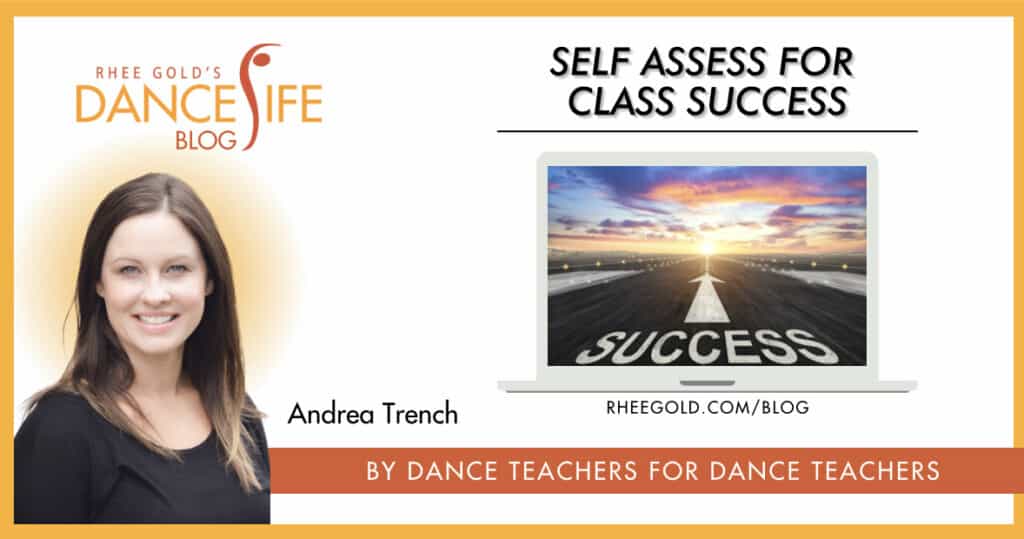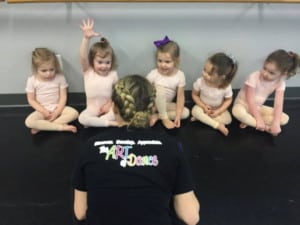Self Assess for Class Success

The hard work of the year may be over, but the most important work you could do as a teacher has arrived. Since the memory of your classes is still fresh, this is the perfect time to reflect back on the past dance season and perform a self-assessment. Self-assessments bring to light what was successful in your classes and what can be improved moving forward. We want our students to grow each year from our classes, right? We must also grow from them as well.
Think back on your classes this past season and ask yourself the following questions:
SPACE
- Did I create a safe physical space for my dancers?
- Is there anything in the studio that was a distraction for me and/or my dancers that can be moved or removed?
- Was the studio stocked with essential supplies (kleenex, paper towels, disinfectant spray/wipes, hair ties, first aid kit, etc.)?
- Are props able to be stored out of sight but nearby?
- Do any props need to be replaced?
- Would taped floor markers be useful?
- Are the floor markers taped properly and useful the way they are?
- Do I have enough space for my personal teaching belongings (dance bag, computer, notebook,etc)?
- Is there a better way to set up the space to make it more organized?
- Did I leave the studio clean and ready for the next teacher?
TEACHING
- Did I arrive at the studio with plenty of time to set up and prepare?
- Did I begin and end my classes on time?
- Did I greet every dancer?
- Did I make eye contact with every dancer?
- Did I say each dancer’s name at least three times during class?
- Did I create an emotionally safe space for my dancers?
- Did I stay regulated and control my emotions and feelings?
- Did I show a general interest in my students?
- Did I see my students as children first, dancers second?
- Did I plan my lessons thoroughly?
- Did I study and know my lessons without referring to them (much) during class?
- Were my music playlists created with the flow of the class, including transition music, so I didn’t have to tend to my music too much?
- Was the volume of my music at a healthy level where I didn’t have to yell over it?
- Were my directions simple, clear, and developmentally appropriate?
- Did I offer a multi-sensory learning experience?
- Did I maintain control of my class?
- Did I keep each class engaging and exciting?
- Did I keep my dancers moving?
- Did I stay focused on the positive behaviors in class?
- Was I able to adjust and pivot successfully when things didn’t go as planned?
- Did I offer improvisation opportunities for students to create their own movement?
- Did I invite dancers to contribute their own thoughts and ideas?
- Did I teach theater etiquette as students watched each other perform?
- Did I avoid empty praises (i.e. good job!) and, instead, give meaningful, descriptive feedback?
- Did I have consistent attendance
CAREGIVERS
- Did I greet caregivers?
- Did I give them a quick class review during dismissal?
- Did I share important studio information with them adequately?
- Did I remain professional during my interactions with caregivers?
Once you have answered these questions, you can move forward knowing where you shine and where you need to focus your attention. As a new season begins, refer back to these questions often, not just at the conclusion of the season. The more we reflect on the learning environment we are creating, the more we grow as teaching artists. In turn, we become the best teacher we can be. Our students reap the benefits of having a teacher who returns to class each week a better educator than the week before.
Andrea Trench is dedicated to helping dance teachers create and deliver content that is research-based and developmentally appropriate for children under the age of 6. Her primary focus is classroom management, conceptual teaching, and foundational movement skill development in early childhood dance education. In addition, Andrea uses her 12 years of experience as a partner in a dance studio to inspire, equip, and empower educators.








